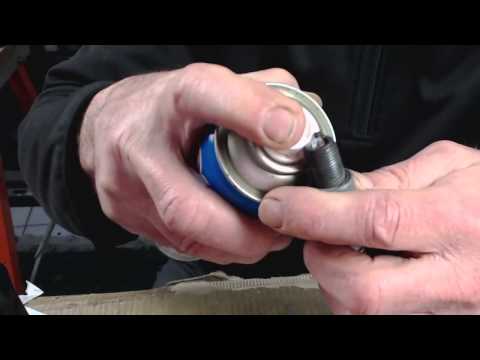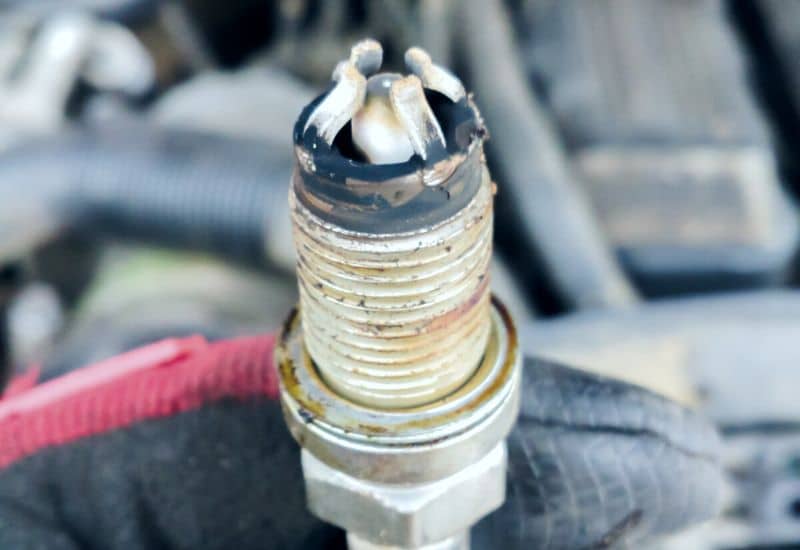
Your car’s spark plugs are one of those things that are easy to forget about. Right up until there’s a problem and you realize how one slightly fouled plug can cause a huge host of other problems.
Spark plugs play a critical role in igniting the fuel/air mixture necessary for internal combustion. This keeps the engine rotating and powers everything else in the vehicle in one way or another.
Unfortunately, a spark plug can be fouled by oil residue, carbon deposits, blistering, or improper gapping. Many of these issues can have root causes in lax maintenance habits, driving style, and other more serious mechanical faults.
So, understanding the warning signs of fouled spark plugs and taking the appropriate action can help prevent costly repairs down the line.
To troubleshoot why your spark plugs are fouling, how to fix them and how to keep them from fouling again in the future, we’re going to have to roll up our sleeves on some technical details.
What Does It Mean When a Spark Plug Is Fouled?

A fouled spark plug typically has some form of residue or has been damaged to the point that it’s affecting performance. This can cause the plug to fire poorly, misfire, or cause the engine to idle roughly. Not only can this affect the engine performance in the short term, but misfires and other mechanical faults can cause serious damage to other engine components and the exhaust system.
Symptoms And Warning Signs that Indicate Fouled Spark Plugs
Fouled spark plugs have some telltale signs to look out for. Some are subtle and creep up on you over time, making them hard to notice as being immediately out of the ordinary.
Then others are salient and trying to tell you that it’s time to pull over as soon as possible to start troubleshooting.
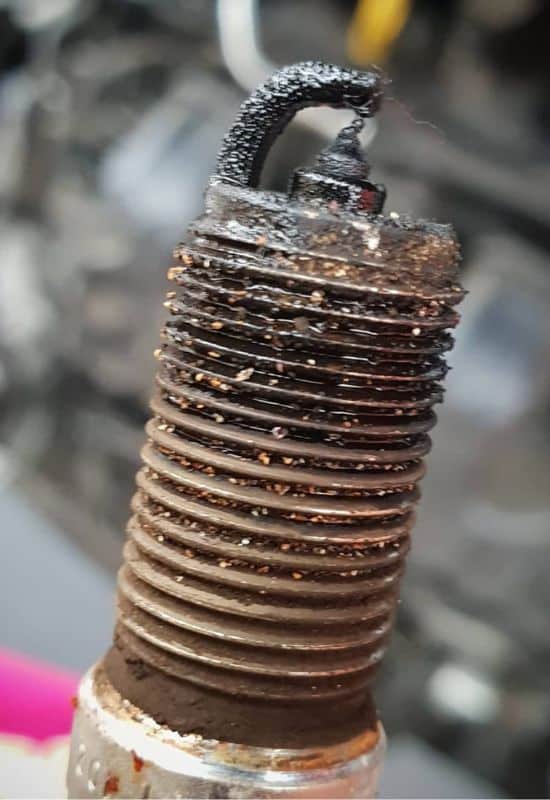
Symptoms of a fouled spark plug include:
These symptoms can manifest gradually over time and can surprise you as they suddenly worsen. Understanding why and what to look for will help you stay on top of a fouled spark plug problem before it can do more serious damage to the vehicle’s engine.
1: A Rough Idle
The performance of a fouled spark plug often starts as a rough idle. Essentially the spark plug starts to fail to ignite the gasoline in the cylinder on time. This causes more fuel than normal to leave the engine via the exhaust system.
At the same time, the engine’s oxygen sensor(s) are confused into thinking that the engine is getting too much fuel. This faulty information is then sent to the ECU, which adjusts the fuel/air mixture to make it leaner.
Unfortunately, the engine then struggles to run smoothly on the lean mixture, which causes a rough idle.
2: The Engine Starts Misfiring
As the problem worsens, a spark plug can’t effectively burn the fuel introduced to the combustion chamber can lead to misfiring. This often starts out as a sputter of the engine stumbling, then quickly worsens.
Most of the time a serious misfire will cause the check engine light to come on or even flash on the instrument cluster. You’ll also notice a serious reduction in power.
Though the concern with this type of misfire goes beyond the potential damage to the engine.
When residual fuel from a misfire passes into the exhaust system, it can end up in the catalytic converter, where it can cause massive damage that requires an expensive repair, on top of the cost of potential damage to the engine caused by fouled plugs.
3: The Engine Has Trouble Starting
Fouled spark plugs make it much harder for the car to crank the engine over. The alternator and starter are fine even if the battery is fully charged.
This is one of those symptoms that’s hard to spot early on. At first, the engine might only take a second longer to start, and you can go along your merry way oblivious to the fouled spark plugs. Though as time goes on, it will start to get harder and harder, and you’ll start to notice more salient symptoms of a spark plug problem.
4: The Car Has Increasingly Bad MPG
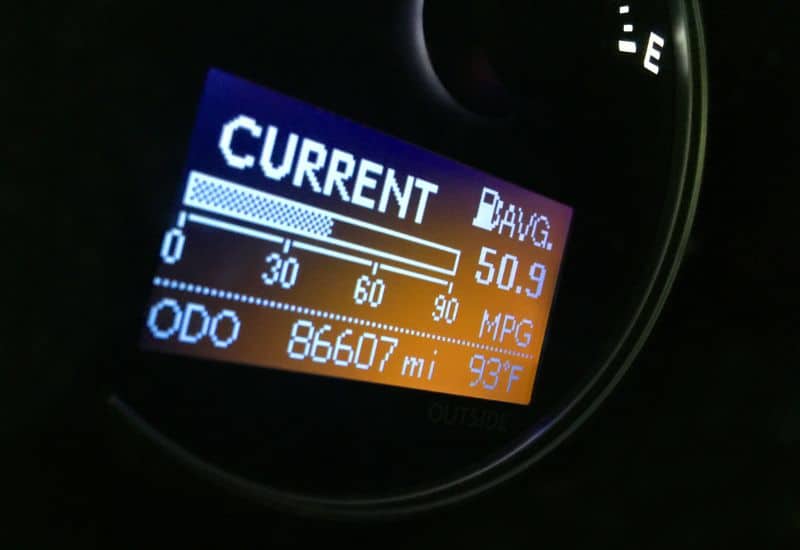
The unburned fuel caused by oil-fouled spark plugs can also affect the car’s fuel economy. After all, that fuel is essentially being wasted and it will require more fuel to keep the car moving.
This is another one of those things that you might overlook at first. Especially if your car’s computer doesn’t display MPG information. If your car does have an MPG reading somewhere in the system, and you’ve noticed it’s been idling hard, make a point to keep track of performance in the city and on the highway. If you see it dropping more than 10 to 15% below the norm, you should suspect a problem.
You should also note that poor fuel economy might also be caused by a spark plug that isn’t gapped according to the factory specifications. If this is the case, and you catch it early, you might be able to correct the gap, to prevent more serious problems. This is especially true if you’ve recently had a spark plug replaced or a tune-up and you notice the MPG is still off.
5: The Car Is Down on Power When Accelerating
Properly functioning spark plugs help the engine to be responsive. You step on the gas pedal, and the car instantly responds. When you have one or more fouled spark plugs, this responsiveness is replaced with lag, especially when you need to accelerate quickly to do something like merge at highway speed.
Unfortunately, this isn’t a standalone sign of fouled spark plugs. Several things can cause the engine to be down on power or give it poor acceleration. Though in my experience, if the car is down on power, you step on it, and the lag happens in concert with a series of minor misfires, it usually means either a spark plug issue or a problem with a faulty ignition coil.
5: The Exhaust Has a Strange Fuel or Oil Odor
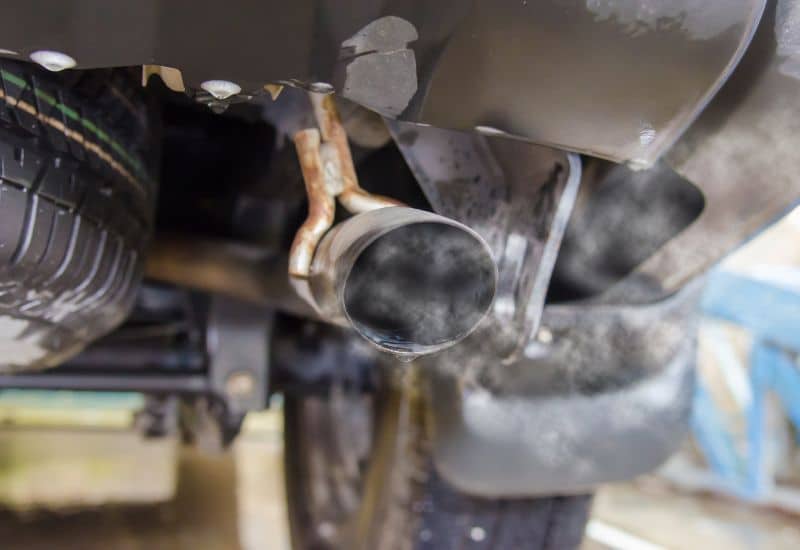
When unburned fuel from fouled spark plugs passes into the exhaust system, it naturally changes the odor of the exhaust. This causes the engine to run rich but can often be related to other engine problems.
A lot of times you get this fuel odor in the exhaust for a few minutes after a misfire, which can be caused by several other things. Including an ignition coil problem that affects spark plug performance all on its own.
When you notice a fuel odor in the exhaust without a misfire, yet while the car is down on power and rough idling, the suspicion of fouled spark plugs starts to rise.
It’s also possible for oil contamination in the cylinders to contribute to fouled spark plugs. When this happens, the exhaust coming out of the tailpipe might have a blue tinge to it, and the smell of burning oil.
What Causes Spark Plug Fouling?

Spark plugs can become fouled with age. Though some mechanical faults can lead to fouling or simply accelerating the process of spark plug failure. This includes:
1: Oil Contamination in Combustion Chamber
Oil contamination in the combustion chamber is one of the more common causes of oil-fouled spark plugs in slightly older vehicles. This can happen when ordinary engine oil starts collecting on the intake valves’ stems. It can then be drawn into the combustion chamber during the normal cycle of the engine.
At that point, hot exhaust gases burn the oil residue on the stems of the exhaust valves. If there happens to be too much clearance between the valve stems and guides, the engine can draw more oil down the guides and into the cylinders.
This oil residue in the combustion chamber can start to affect the tip of the spark plugs leading to poor performance and eventual failure. If you catch oil contamination early, the original spark plugs might be saved.
The most obvious signs of a problem like this tend to be a rough idle, blue exhaust, or other signs that the engine is burning oil. If oil contamination like this continues to go unchecked, you’ll likely also notice the oil on the dipstick is low when you check the oil, and the car’s oil pressure is slightly decreased due to reduced volume in the system.
2: Carbon Buildup on the Spark Plugs
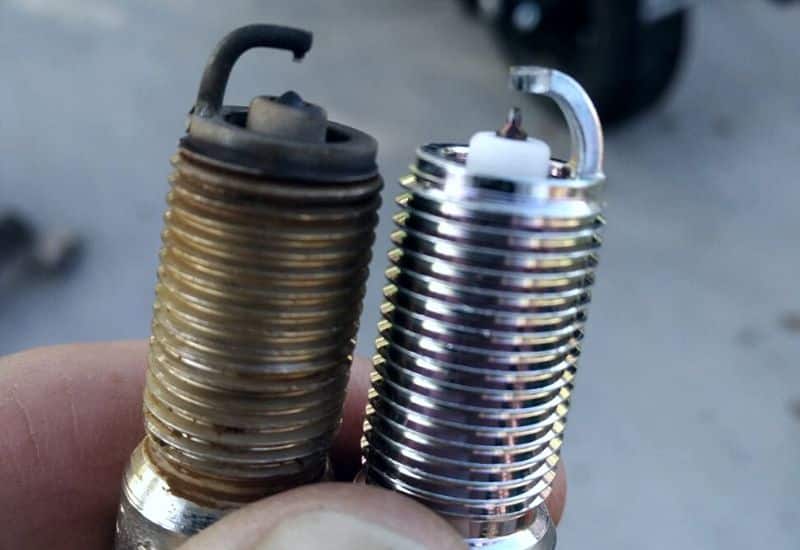
If you check your spark plugs and see that the electrodes or the insulator tip of one or more plugs look black with dry soot, it could be carbon buildup fouling the plugs. However, there are a lot of reasons why this could happen.
One of the more common causes of carbon buildup fouling spark plugs is simply that you’ve been driving around with a dirty air filter. The effect can be compounded if you frequently drive around at low city speeds, which can affect the combustion process.
Excessive idling can also affect the integrity of your fuel injectors, causing them to gum up or become dirty, contributing to carbon buildup on the spark plugs.
3: Engine Overheating And/or Running Hot
While they are meant to handle the ordinary hot conditions created by a normally operating engine block, spark plugs can still be affected by overheating or the car frequently running a little too hot. This can affect the plug tips, causing them to blister and fail prematurely.
There are several reasons why a car might be running hot or overheating. Resolving any coolant system issue or other mechanical faults becomes a critical part of the repair equation.
It’s also worth noting that pre-ignition in the combustion chamber can produce extra heat, which can also affect the spark plug tips without any overt signs of a major overheating problem. This can manifest as knocking sounds and/or misfires, damaging your engine and exhaust system in their own right.
If you pull your spark plugs and the tips look blistered or the electrode looks worn down, you have some sort of overheating problem fouling the spark plugs.
4: Improper Spark Plug Gap
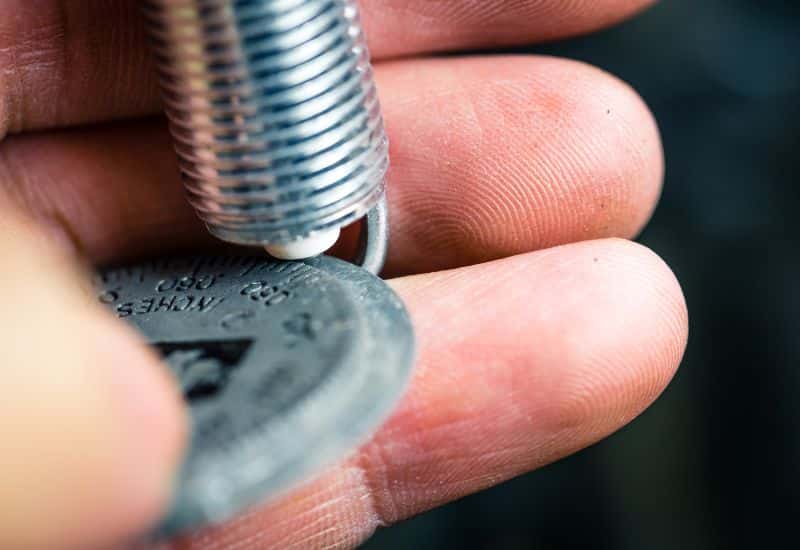
Every spark plug relies on a specific gap to ensure it has enough space for the spark to jump. The calibration is typically different for different makes and models.
If the gap distance is wrong, the spark plug will still fire, but it will do so under stress, rapidly contributing to erosion which fouls the spark plug in a relatively short amount of time.
If you’ve noticed symptoms of fouled plugs and you’ve recently changed your plugs or had a tune-up, it might be that the plugs don’t have the correct gap.
This usually happens in conjunction with other engine performance problems, such as the car being down on power, rough idling, and a penchant for stalling at the lights. In some cases, you might even have occasional misfire problems.
5: Lax Maintenance and Driving Habits
Your driving habits and lax maintenance can increase the risk of your spark plugs fouling due to carbon buildup, erosion, and blistering.
Frequently driving at slow city speeds, letting your car idle for a long time, going too long in between oil changes, and not replacing your air filter when needed can all accelerate the life span of your spark plugs while increasing the risk of them fouling.
How to Fix Fouled Spark Plugs
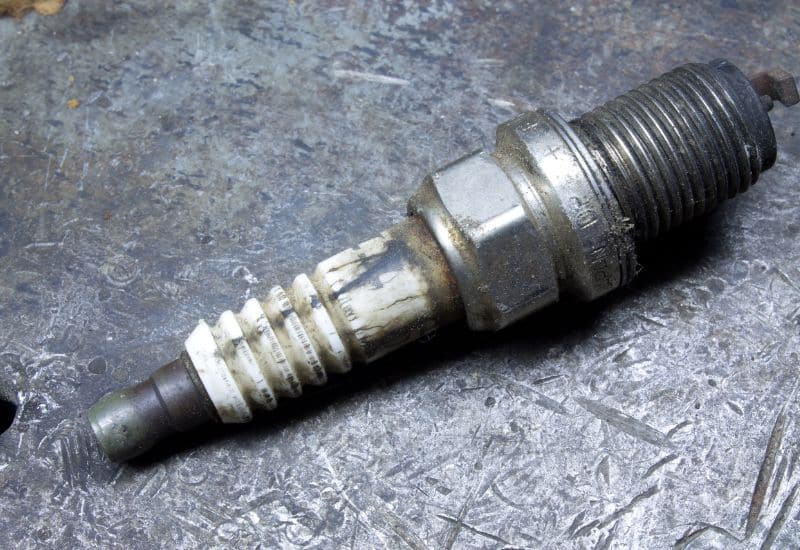
There are short and long-term fixes for fouled spark plugs. If you just need to get by for a few days or a week but you don’t want to deal with the performance issues, you can try cleaning the plugs. Otherwise, the ideal long-term fix is simply replacing the fouled plugs with new ones.
How to Clean Fouled Spark Plugs
If the spark plugs are fouled due to mild carbon build-up and/or oil contamination in the cylinder, you might be able to give them a good cleaning. This is a short-term fix, but it will at least help with engine performance for a few days to a few weeks.
It will have very little effect on blistered plugs due to overheating or plugs fouling due to improper gaps. You’ll need a torque wrench, a small wire brush, some canned air, and some quick-dry fuel injector cleaner for this job. You can then clean the fouled spark plugs using the following steps.
When you have more time, you can replace the fouled spark plugs with new ones. This will restore normal performance.
Just remember that other problems, like a coolant system failure that caused overheating or other mechanical faults, will need to be fixed in short order, or you’ll likely end up dealing with fouled spark plugs again soon.
How Do You Stop Spark Plugs Fouling?
The first line of defense against spark plugs fouling starts with staying on top of general maintenance issues. This includes replacing your air filter, checking your oil, getting oil changes on time, and ensuring that your spark plugs are properly gapped. If your car runs hot or has been overheating, you must ferret out the cause without delay.
If you do a lot of low-speed city driving, make it a point to take the car out on the highway from time to time. You can also try reducing how often you leave the car idling.
Keeping an eye on your engine temperature and dealing with overheating issues is another critical aspect of preventing spark plug fouling. If you pull a plug and see signs of blistering, you should suspect that some coolant system fault is causing the car to run hot.
FAQ
Will a fouled spark plug clean itself?
In a properly maintained vehicle spark, plugs will essentially clean themselves under normal operating conditions.
So, when a spark plug starts fouling due to carbon buildup, oil residue, or blistering from overheating, it’s a sure sign that the plug is telling you there’s another mechanical fault afoot.
How do you stop spark plugs from fouling?
Proper maintenance and good driving habits will go a long way toward reducing spark plug problems. This also means making sure that the gap is correct on your spark plugs or that you use pre-gapped plugs. Then staying on top of any overheating concerns and checking your oil adds another layer of protection against foiling.
Is it worth cleaning fouled spark plugs?
Cleaning fouled plugs should only be seen as a short-term fix. It’s the sort of thing you might do on a Monday before planning to change the plugs the next Saturday or perhaps help the plugs and engine performance while you’re on vacation.
You’ll still need to replace the spark plugs with properly gapped new ones in the long term. Then make sure that you address any mechanical faults that might have caused them to foul in the first place.
Conclusion
In reality, fouled spark plugs themselves aren’t all that hard to deal with. Cleaning and eventually replacing them is the easiest fix. What fouled spark plugs are really telling you is that there’s likely something else more serious brewing under the hood.
The bigger concern is what’s causing your spark plugs to foul in the first place. Overheating issues, misfires, and lax maintenance concerns must be addressed as soon as possible to keep your spark plugs from fouling again.

Written By
Jason Farrell
Jason Farrell is a certified master technician, the editor of Mechanic’s Diary in Pittsburgh, Pennsylvania. He is ASE (Automotive Service Excellence) certified and earned a Bachelor’s Degree in Automotive Technology from Pittsburg State University. With nearly 18 prior years of experience in the automotive field, he has extensive knowledge about Domestic, European, and other foreign makes and models of cars and light trucks. Jason’s experience working as a technician and service manager at dealerships, gave him the experience and know-how of most aspects of inspection, diagnosis, and repair from engine and drivability to electrical, HVAC, brakes, steering and suspension and everything in between.


